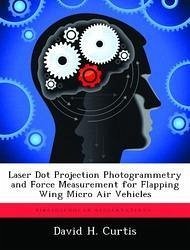
Experimental Methods to Characterize Nonlinear Vibration of Flapping Wing Micro Air Vehicles
Versandkostenfrei!
Versandfertig in über 4 Wochen
52,99 €
inkl. MwSt.
Weitere Ausgaben:

PAYBACK Punkte
26 °P sammeln!
For urban combat reconnaissance, the flapping wing micro air vehicle concept is ideal because of its low speed and miniature size, which are both conducive to indoor operations. The focus of this research is the development of experimental methods best suited for the vibration testing of the wing structure of a flapping wing micro air vehicle. This study utilizes the similarity of a beam resonating at its first bending mode to actual wing flapping motion. While computational finite element analysis based on linear vibration theory is employed for preliminary beam sizing, an emphasis is placed ...
For urban combat reconnaissance, the flapping wing micro air vehicle concept is ideal because of its low speed and miniature size, which are both conducive to indoor operations. The focus of this research is the development of experimental methods best suited for the vibration testing of the wing structure of a flapping wing micro air vehicle. This study utilizes the similarity of a beam resonating at its first bending mode to actual wing flapping motion. While computational finite element analysis based on linear vibration theory is employed for preliminary beam sizing, an emphasis is placed on experimental measurement of the nonlinear vibration characteristics introduced as a result of large movement. Beam specimens fabricated from 2024-T3 aluminum alloy and IM7/5250-4 carbon epoxy were examined using a high speed optical system and a scanning laser vibrometer configured in both three and one dimensions, respectively.














